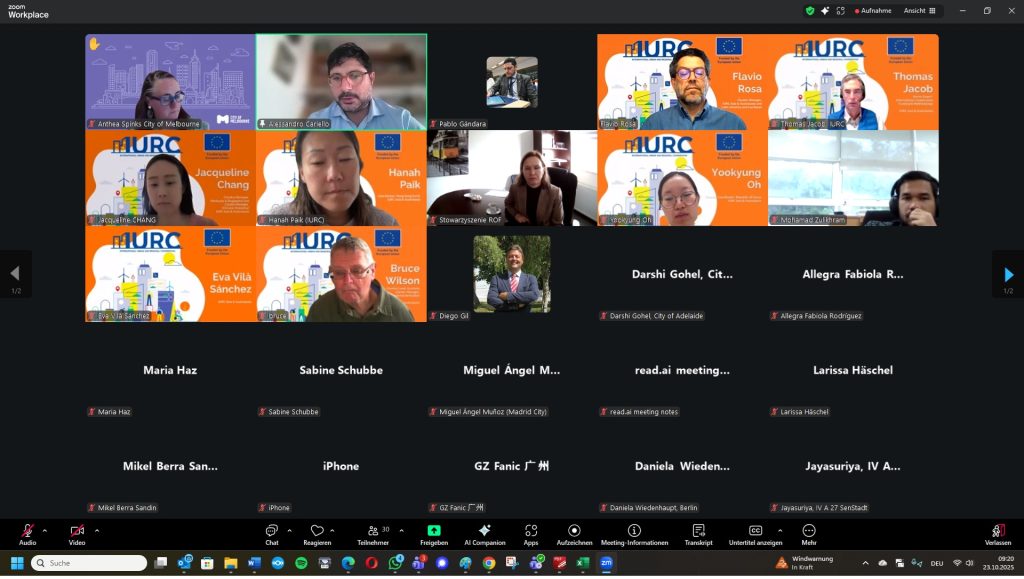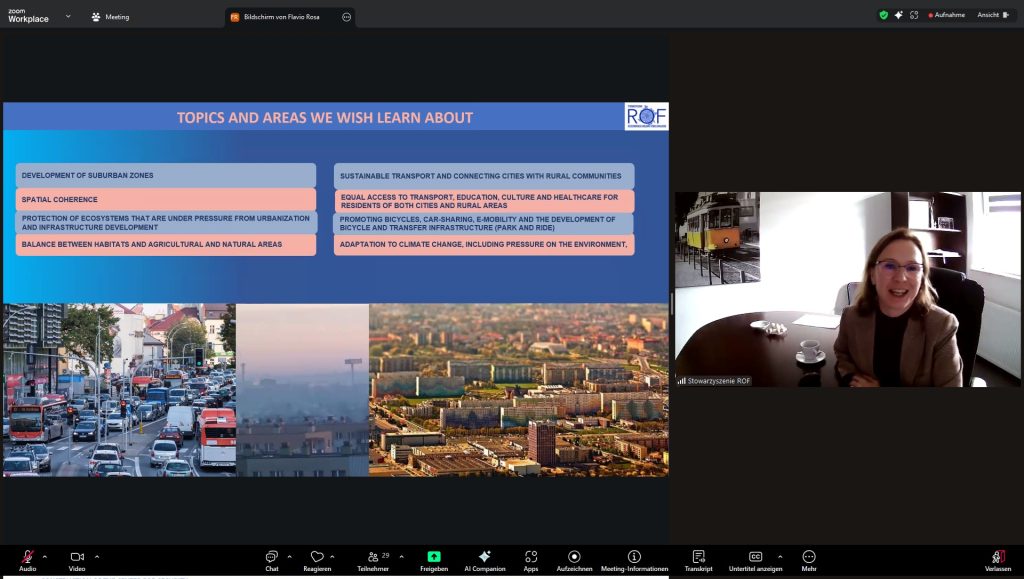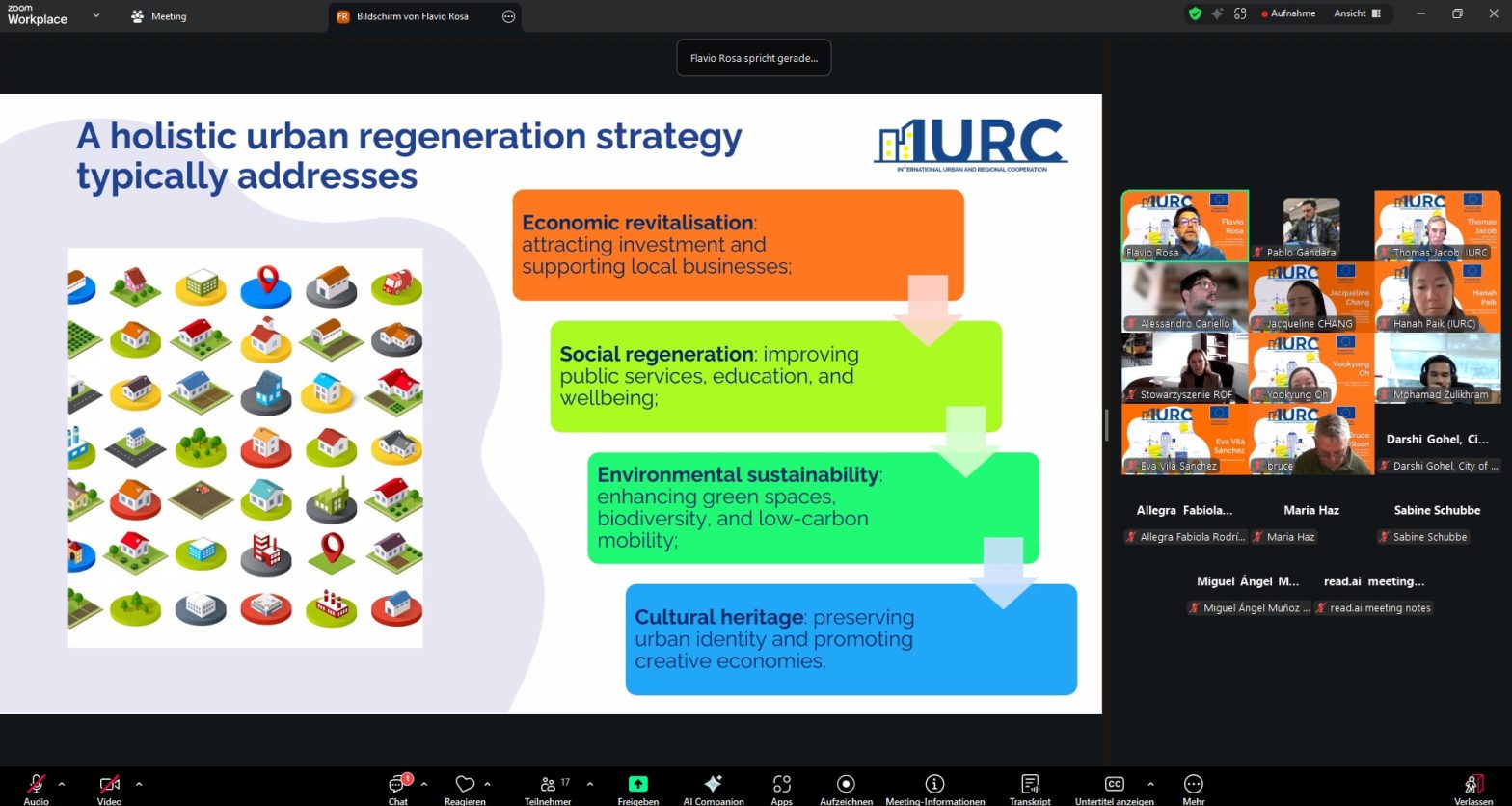On 23 October 2025, the International Urban and Regional Cooperation (IURC) Asia & Australasia programme held its second deep dive session under the Urban Regeneration & Social Cohesion thematic cluster, bringing together cities from Europe and Asia to exchange practical approaches to revitalising neighbourhoods, supporting community-driven development, and strengthening social inclusion. The session gathered participants from Bari (Italy), Melaka (Malaysia) and Rzeszów (Poland), and was moderated by IURC Cluster Expert Professor Flavio from Sapienza University of Rome.
The webinar opened with an overview of the Cluster 6 objectives and upcoming activities, emphasising the holistic nature of urban regeneration and its four interconnected dimensions—economic revitalisation, social regeneration, environmental sustainability and cultural heritage preservation. These principles, aligned with the Leipzig Charter and the Urban Agenda for the EU, guided the discussion as cities presented their ongoing transformation strategies.
Bari: Transforming the City Through Adaptive Reuse and Community Networks
The first presentation came from Bari, where architect and urban planner Alessandro Cariello outlined the city’s long-term vision for making urban spaces more attractive, liveable and socially vibrant. Bari’s regeneration strategy combines adaptive reuse, improved public spaces and the 15-minute city concept to reconnect neighbourhoods and enhance daily life for residents. A central element of the approach is the Reti Civiche Urbane (Urban Civic Networks) programme—municipally funded grants that empower community organisations to co-create cultural, social and environmental initiatives. This bottom-up model, fully financed by the city, demonstrates how public investment can stimulate citizen-led transformation and build strong civic ownership over urban change.
Melaka: Balancing Heritage, Tourism and Sustainability
Representing Melaka, Mohamad Zulikhan bin Zulh Ibrahim presented the city’s efforts to integrate smart technologies into its historic urban landscape. Melaka highlighted its iTraffic system for intelligent mobility management, as well as initiatives aimed at preserving heritage assets while supporting sustainable tourism. With its rich cultural identity and growing visitor numbers, the city is striving to balance economic development with long-term sustainability, exploring ways to manage congestion, protect heritage districts and maintain high-quality public spaces.
Rzeszów: Managing Growth and Enhancing Spatial Cohesion
The final presentation came from Rzeszów, which shared its experiences in addressing suburbanisation pressures and strengthening cohesion across its expanding urban area. Rzeszów is investing in public space renovations, participatory planning and innovative spatial management tools to ensure that growth does not compromise liveability. The city emphasised the role of citizen engagement in regeneration processes and showcased examples of urban improvements aimed at creating more inclusive, connected neighbourhoods.






Disclaimer: This website news post has been elaborated with AI (Chat GPT/Zoom) support.
